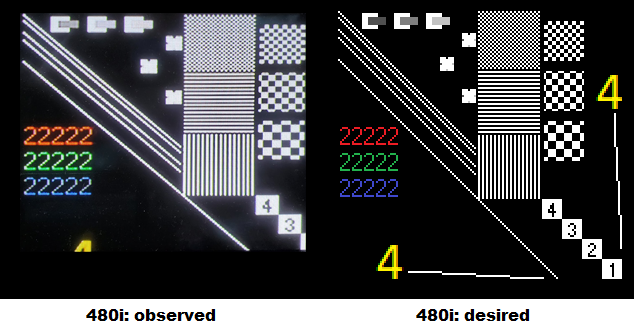Dell E2211H review: input lag and upscaling tested using the piLagTesterPRO
This TN 1920x1080 LCD sold thru 2014 for about $140. But as it turns out it has very low lag and pretty good response time, showing that display technology has not advanced anything like CPUs or GPUs over the same timespan.
Overview/Image quality
At native resolution viewed from straight on this LCD looks fine. Because it's a TN display viewing angles are poor when viewed from below, but are fine from the side or above. At native resolution it's pixel perfect, with zero cropping or aliasing, as you'd expect for a desktop monitor.It accepts VGA and DVI input. Because my tests device only outputs HDMI I used an adapter to plug into DVI but it didn't seem to hurt the image quality at all. VGA has the same timing as the DVI port.
Input Lag
This display has a game mode in the color/scene menu, but really this just changes the color balance. No display setting changed lag. I used a piLagTesterPRO to measure input lag. This device sends a frame of video over HDMI and measures how long it takes to display it.
It supports both 60hz and 75hz. Except where noted below I used 60hz.
Full Test Results
I report two kinds of values. 1st response measures how long it takes for the TV to start responding (I use a 5% change in display brightness). This overly optimistic value doesn't tell how long it takes to see anything useful, but matches what other reviewers call input lag. full response is a more realistic measure of lag, and requires the display to reach 80% of it's final brightness. This combines both input lag and response time, and is closer to what you would actually experience in a game.Results compared to other displays
You can see this display is quite competitive, with best of class input lag. These are all measured at 60hz so the display would rank even higher if this ranking was based on it's 75hz performance (though, it can't do 1080p at 75hz so it's not so clear it's fair to include that refresh rate).
Response time is a bit slow, but the sum is still very competitive. Despite the age it's still one the fastest displays I've tested. It seems that TN displays have had low lag for a long time. On the other hand, the long response time means that motion will be a little blurry so it's definitely not an ideal gaming monitor. But heck it's not bad, at this price range especially.
Conclusion
Other models
I tested the Dell E2211H model, which is the 22" version. There appears to be two versions of this panel: the E2211H and the E2311H. Based similarities in their names, specs and release date I suspect that they would perform similarly, just differing in pixels size. There's also the E2211HB, which I think is the same model but with extra accessories bundled. Honestly, the Dell TN displays from this era that I've tested all perform quite similarly; probably any TN model from DELL would be about the same league, at least in terms of lag. I have noticed that not all support interlaced modes however so if you interests are retro you might need to be more choosy.



Comments